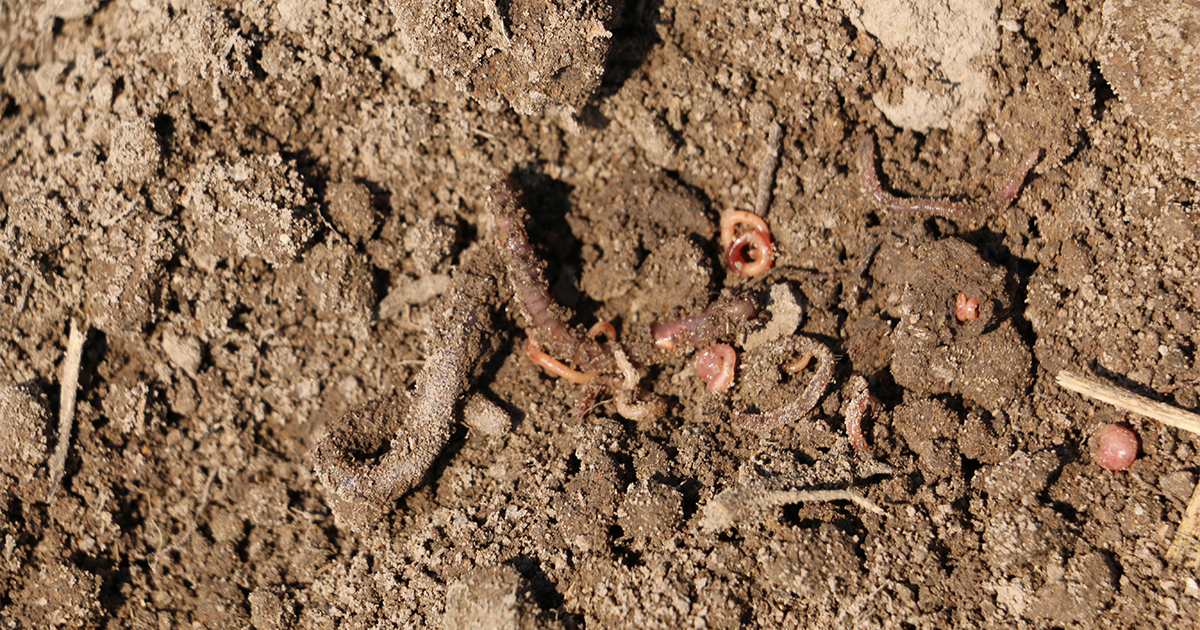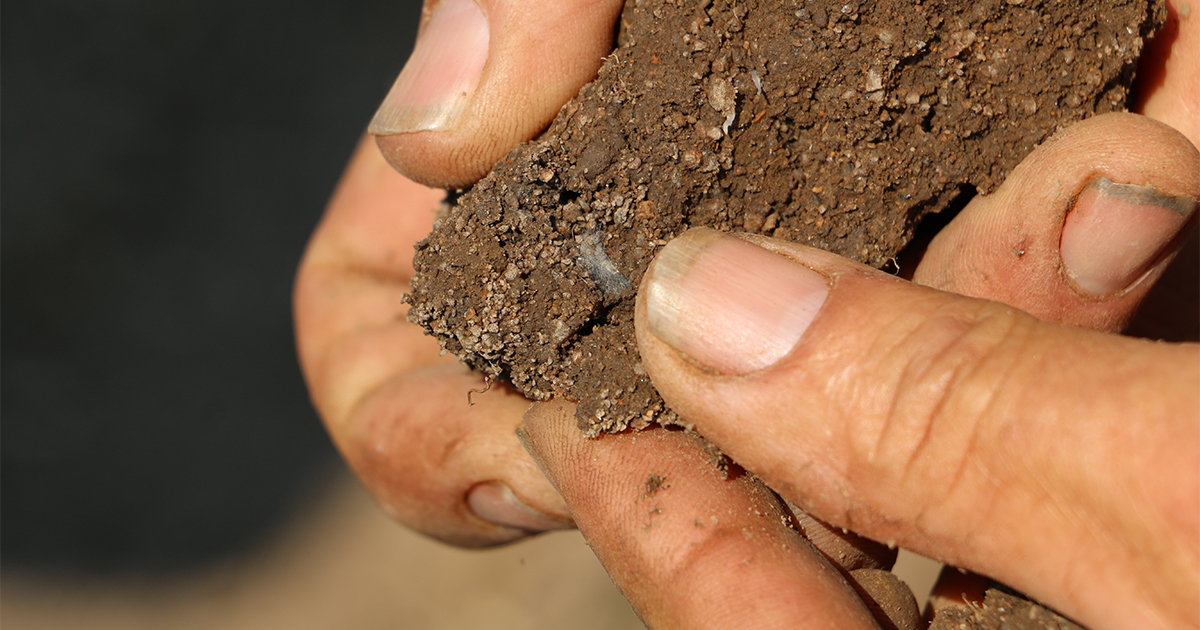Richard Hobbs (left), HCPSL, discusses soil health and biology with cane grower Lyle Glenwright.
Legume cover crops and minimum tillage build biological activity
by Brad Pfeffer, SRA
Lyle Glenwright is much more comfortable fattening cattle, but after recently jumping into sugarcane farming, he is also looking at his soil health and fattening up a nice herd of earthworms as well.
 Lyle Glenwright has a healthy earthworm population in his soil.
Lyle Glenwright has a healthy earthworm population in his soil.
HCPSL agronomist, Richard Hobbs, says the earthworms are a sign that the soil biology is going well.”
For Lyle, having grown up in the beef industry, he is far more comfortable breeding cattle than growing cane and digging up soil, but now he is learning to treat the earthworms and other beneficial organisms in his soil with as much care as his livestock. That way, he can put the soil biology to work to grow better crops of cane.
Lyle has been growing cane in the Herbert region for three years, moving to the property when his family purchased it to diversify their 24,000 hectare cattle breeding property, Laroona Station, at Charters Towers. Lyle's original purpose for the 600 ha property at Abergowrie was to use it to fatten young cattle bred at Laroona for the live export market. The property already had 400 ha of pasture, and they initially planned to turn 200 ha of sugarcane into pasture as well.
They have stuck with their plan of sending their cattle, which are mostly Brahman, down to the Abergowrie property for fattening. However, once Lyle got his feet on the ground he decided he wanted to give cane farming a go as well.
“The property is a good seasonal hedge for conditions at Charters Towers,” he said. “We also figure that having cattle and cane will help us ride out ups and downs in both markets.”
Being new to cane, Lyle wanted advice on how to get the most from his paddocks. This led him to Richard Hobbs (HCPSL) and a whole range of practices that are improving soil health on the property.
They are converting from 1.63 metre rows to 1.8 metres to support a controlled traffic farming system, moving to zonal tillage, and planting legume cover crops.
The Glenwrights are also applying biosolid from the city of Townsville. Having the two properties means that they can carefully manage the sustainable use of this product.
“In the wet season here at Ingham, the biosolid goes up to Laroona, and vice versa,” he said. “We’re soil testing blocks after they’re harvested, before the cane is ploughed out, then spreading the biosolid at 110 tonnes per hectare, and then testing again afterwards to get the recommendations for our sugarcane fertiliser program.”
Richard Hobbs said all these factors were working together to improve soil health, and there were already plenty of signs that things are going well.
“We can see Lyle has good populations of worms, and there is hyphae from beneficial fungi which is helping to naturally improve the structure of these heavy clay soils,” Richard said.
“The more we can do that with less horsepower, cultivation and fuel, the better the soil health and the cheaper the crop is to grow.
 Beneficial fungi in Lyle’s soil.
Beneficial fungi in Lyle’s soil.
“There has been a lot of work busting up old compaction to wipe the slate clean before starting the conversion to 1.8 metre rows. As they move to 1.8m, some of that heavy compaction from the old interrow is of course where some of the cane rows are, so removing the compaction is important to get the paddocks back to square one again. This also means rebuilding soil health.
“After that, their aim is to go through with minimal cultivation. Normally with soil like this you would need 6-8 tillage operations to get the new cane crop in, but now by using a bedformer the aim is to get that down to three or two.”
Richard added that every time a grower saved a pass with machinery, it was helping improve soil health.
“Steel destroys carbon. By reducing tillage, Lyle is helping conserve labile carbon in the soil, which is what we need to improve soil health and produce better crops of cane,” he said.
Lyle said they had seen a positive response to using the biosolid upon pasture at Charters Towers, but it would take a couple of years before he could make a call on how it performed in the cane.
He also added that he had a few doubts about moving to 1.8 metre rows, but said that so far it was working well.
“This isn’t the best cane growing area here, so I was worried if we got a bad strike the weeds would be a real problem. You can ask half a dozen people and get half a dozen different opinions, so in the end I talked to Richard and gave it a go. I’m just a cowboy, so I need advice on row spacing, nutrition, and growing legumes,” he said.
Richard Hobbs is part of collaborative project on soil health in the Herbert region. This project is funded and supported by SRA, HCPSL, BPS, Queensland Department of Agriculture and Fisheries, Wilmar, the University of Queensland and University of Southern Queensland.
Source: Summer 2019 Cane Connection article re-published with permission from SRA.
Read Pulse Check blog articles | Pulse Check Coastal facebook | Subscribe to the monthly newsletter

